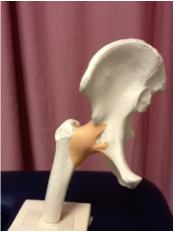- Home
- About Us
- TSPT Academy
- Online Courses
-
Resources
- Newsletter
- Business Minded Sports Physio Podcast
- Day in the Life of a Sports PT
- Residency Corner
-
Special Tests
>
-
Cervical Spine
>
- Alar Ligament Test
- Bakody's Sign
- Cervical Distraction Test
- Cervical Rotation Lateral Flexion Test
- Craniocervical Flexion Test (CCFT)
- Deep Neck Flexor Endurance Test
- Posterior-Anterior Segmental Mobility
- Segmental Mobility
- Sharp-Purser Test
- Spurling's Maneuver
- Transverse Ligament Test
- ULNT - Median
- ULNT - Radial
- ULNT - Ulnar
- Vertebral Artery Test
- Thoracic Spine >
-
Lumbar Spine/Sacroiliac Joint
>
- Active Sit-Up Test
- Alternate Gillet Test
- Crossed Straight Leg Raise Test
- Extensor Endurance Test
- FABER Test
- Fortin's Sign
- Gaenslen Test
- Gillet Test
- Gower's Sign
- Lumbar Quadrant Test
- POSH Test
- Posteroanterior Mobility
- Prone Knee Bend Test
- Prone Instability Test
- Resisted Abduction Test
- Sacral Clearing Test
- Seated Forward Flexion Test
- SIJ Compression/Distraction Test
- Slump Test
- Sphinx Test
- Spine Rotators & Multifidus Test
- Squish Test
- Standing Forward Flexion Test
- Straight Leg Raise Test
- Supine to Long Sit Test
-
Shoulder
>
- Active Compression Test
- Anterior Apprehension
- Biceps Load Test II
- Drop Arm Sign
- External Rotation Lag Sign
- Hawkins-Kennedy Impingement Sign
- Horizontal Adduction Test
- Internal Rotation Lag Sign
- Jobe Test
- Ludington's Test
- Neer Test
- Painful Arc Sign
- Pronated Load Test
- Resisted Supination External Rotation Test
- Speed's Test
- Posterior Apprehension
- Sulcus Sign
- Thoracic Outlet Tests >
- Yergason's Test
- Elbow >
- Wrist/Hand >
- Hip >
- Knee >
- Foot/Ankle >
-
Cervical Spine
>
- I want Financial Freedom
- I want Professional Growth
- I want Clinical Mastery
 Here are a few of the many interesting points discussed in this article by Dr. Neumann in this 2010 Research Review: -You must always include both cross-sectional area and moment arm length when assessing force and muscle action. -The Psoas major acts as an important vertical stabilizer of the lumbar spine, especially in full hip extension, when the greatest passive tension is on the muscle. -The posterior head of the adductor magnus is a primary extensor -Co-activating the hip extensors and abdominals while passively stretching the hip flexors can provide an additional stretch on the hip flexors. -Both the sartorius and long head of the biceps femoris act as secondary external rotators. -Dynamic stability of the hip during high velocity rotation may be one of the primary functions of the short external rotators. -The short external rotators provide acetabulofemoral articulation stability (similar to how the infraspinatus and teres minor provide stability at the glenohumeral joint) -The Gluteus Max. is an important external rotator in closed chain kinematics (such as stopping and cutting). -At 0 deg. of hip flexion, the Gluteus Max. Anterior fibers act as external rotators, BUT At 45 deg. of hip flexion, the Anterior fibers become internal rotators. -The piriformis is an external rotator in full extension, but an internal rotator in hip flexion >90 degrees. - Most adductors become hip extensors between 40 and 70 degrees of hip flexion (the exact degree is not known although research is being done on the topic.) -The Gluteus Minimus tendon attaches to the Anterior and Superior Joint Capsule of the Hip Joint. See Full Article Here
0 Comments
|
Dr. Brian Schwabe's NEW Book in partner with PaleoHacks!
Learn residency-level content on our
Insider Access pages We value quality PT education & CEU's. Click the MedBridge logo below for TSPT savings!Archives
July 2019
Categories
All
|






 RSS Feed
RSS Feed